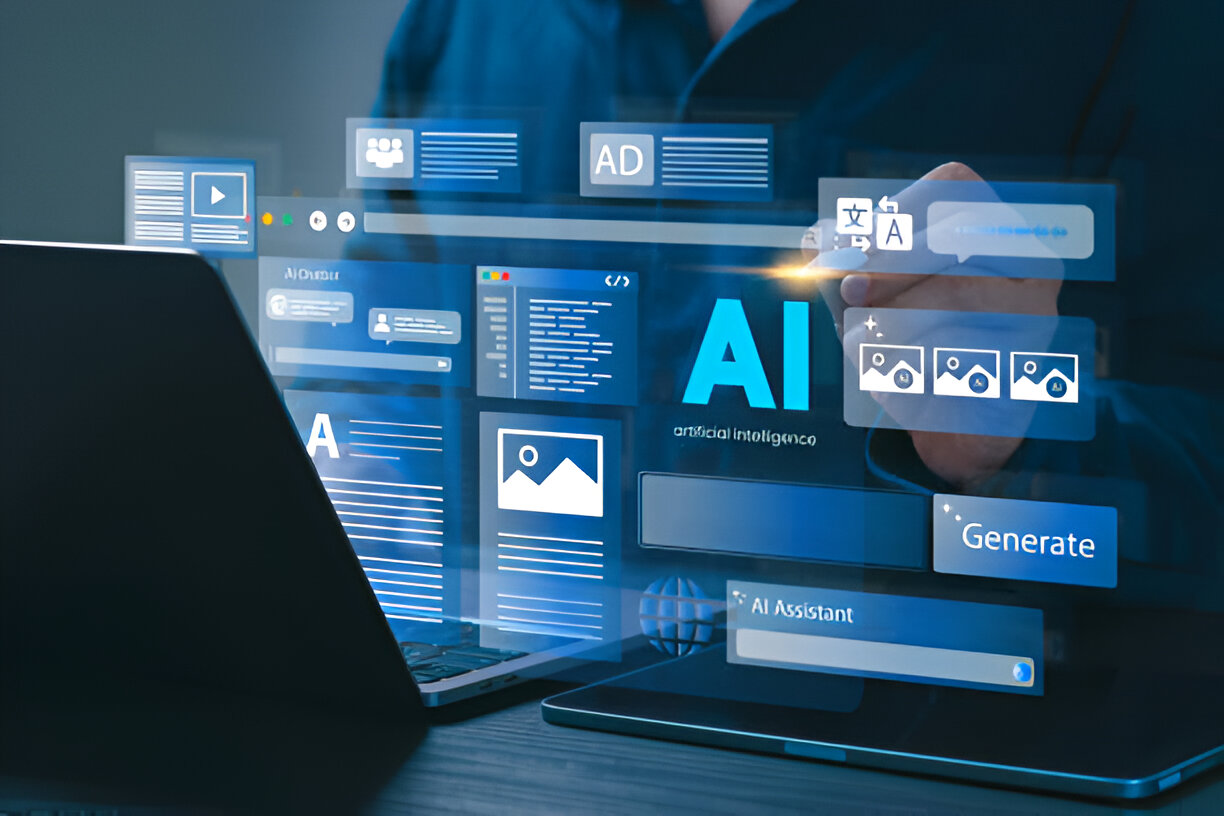In today’s digital landscape, the alarming increase in cyber threats is a major concern for individuals and businesses alike. According to recent statistics, cyberattacks occur every 39 seconds on average, highlighting the pressing need for robust cybersecurity measures. Are you doing enough to protect your data? The reality is that while cybercriminals continue to evolve and develop new tactics, organizations must leverage innovative strategies to safeguard sensitive information. Enter cybersecurity software development—a crucial strategy that not only protects your data but also fortifies your entire digital infrastructure against malicious attacks. This blog will delve into the vital components of cybersecurity software development and the essential data protection tools available to enhance your defenses.
Importance of Cybersecurity Software Development
Understanding Cyber Threats
Cyber threats come in various forms, each with distinct tactics and motivations. Some of the most common threats include:
- Malware: This encompasses any malicious software designed to harm or exploit any programmable device, service, or network. For instance, ransomware locks users out of their files until a ransom is paid.
- Phishing: A fraudulent method where attackers impersonate trustworthy entities to extract sensitive information, often via emails that appear legitimate.
- DDoS Attacks: Distributed Denial of Service attacks overwhelm systems with traffic, rendering sites or services unavailable to users.
These threats not only compromise personal privacy but can also have devastating consequences for businesses, including financial loss, reputational damage, and regulatory fines. For example, the 2017 Equifax breach exposed sensitive data of over 147 million people, costing the company over $4 billion in total losses. Clearly, understanding these cyber threats is the first step toward comprehensive cybersecurity software development.
Role of Cybersecurity Software
Cybersecurity software plays a critical role in mitigating cyber threats. It serves as a defense mechanism against various forms of attacks, ensuring that sensitive data remains secure. Here are some of the key elements involved:
- Firewalls: These act as barriers between trusted internal networks and untrusted external networks. They monitor outgoing and incoming network traffic based on predetermined security rules.
- Intrusion Detection Systems (IDS): These tools monitor networks for malicious activities and policy violations. They alert administrators to potential threats, allowing swift responses to incidents.
- Antivirus Software: This detects and removes malicious software, enabling users to protect their devices from various malware threats.
A robust cybersecurity software development process must integrate these elements effectively, ensuring maximum protection and resilience against evolving threats.
Key Features of Effective Data Protection Tools
Encryption Capabilities
Encryption is a cornerstone of cybersecurity software development, acting as a vital safeguard for sensitive data. It transforms readable data into encoded data that can only be accessed with a decryption key. The significance of data encryption can be seen in various scenarios:
- Compliance with Regulations: Many industries are required to comply with data protection regulations like GDPR and HIPAA, which mandate encryption of sensitive information. Failing to comply can lead to substantial fines.
- Protection of Data at Rest and in Transit: Encryption ensures that data stored on servers (data at rest) and data sent over networks (data in transit) remains secure from interception.
There are several encryption standards to consider in software development:
- AES (Advanced Encryption Standard): A widely used encryption standard that ensures data security with various length keys (128, 192, and 256 bits).
- RSA (Rivest Shamir Adleman): An asymmetric encryption technique used for secure data transmission.
User Authentication Mechanisms
User authentication is another essential feature of cybersecurity software that significantly impacts security. Protection of access to sensitive data is paramount, and there are various authentication methods to enhance security:
- Two-Factor Authentication (2FA): This adds an additional verification step, requiring users to provide something they know (a password) as well as something they have (a mobile device).
- Single Sign-On (SSO): This allows users to access multiple applications with one set of credentials, enhancing user experience while maintaining security.
These mechanisms not only help in mitigating unauthorized access but also foster trust among users who demand protection for their personal and professional data. As cyber threats evolve, implementing robust authentication strategies is integral to a comprehensive cybersecurity software solution.
Types of Cybersecurity Software Solutions
Endpoint Protection Solutions
Endpoint protection solutions are critical in safeguarding individual devices that connect to a network. Every device, from laptops to smartphones, presents a potential entry point for cybercriminals. Endpoint protection solutions enable businesses to efficiently shield these devices by:
- Monitoring: Continuously assessing devices for potential vulnerabilities.
- Quarantining: Isolating infected endpoints to prevent the spread of malware.
- Patching Vulnerabilities: Keeping software updated to guard against known exploits.
Effective endpoint protection can dramatically reduce the risk of a security breach, ensuring that an organization’s entire digital infrastructure remains safe from threats.
Network Security Tools
Network security tools are integral to maintaining the overall security of an organization’s network. They help in monitoring and protecting network integrity against various cyber threats. Here are some key components:
- Virtual Private Networks (VPNs): These create encrypted connections over the internet, ensuring secure communication between remote users and the corporate network.
- Intrusion Prevention Systems (IPS): Active systems detect threats and can take actions to block those threats in real-time.
Both of these tools play pivotal roles in data protection by ensuring that unauthorized users cannot access sensitive information, safeguarding both personal and enterprise-level data.
Best Practices in Cybersecurity Software Development
Secure Coding Standards
When developing cybersecurity software, adhering to secure coding standards is essential in minimizing vulnerabilities. Key secure coding principles include:
- Input Validation: Ensure that input data is validated and sanitized to prevent injection attacks or unexpected behavior.
- Error Handling: Avoid revealing system details through error messages. Implement generic error messages while logging the critical details for developers to analyze.
Common vulnerabilities to avoid include:
- SQL Injection: Exploits weaknesses in database query interactions.
- Cross-Site Scripting (XSS): Allows attackers to inject malicious scripts into webpages viewed by others.
By following secure coding standards, developers can significantly reduce the chances of creating exploitable vulnerabilities.
Regular Security Testing
Regular security testing is an indispensable practice in cybersecurity software development. The frequency of testing ensures that vulnerabilities are detected and mitigated before they can be exploited. Key types of testing include:
- Penetration Testing: Simulated attacks are conducted to evaluate the security of the software. This helps identify potential weaknesses that need addressing.
- Vulnerability Scanning: Automated tools scan software for known vulnerabilities, providing a thorough assessment of its security posture.
By incorporating these testing methods into the development lifecycle, organizations can enhance their security measures, respond to incidents swiftly, and ultimately build more robust cybersecurity software.
Real-World Applications of Cybersecurity Software Development
Case Studies of Successful Implementations
Numerous organizations have recognized the critical role of cybersecurity software development in safeguarding digital assets. One notable example is Microsoft, which utilized advanced machine learning algorithms in its security software to reduce cybersecurity threats by 90% over a span of two years. This successful implementation demonstrates that proactive measures, alongside continuous improvements in security software, can yield significant reductions in potential breaches.
Similarly, the financial institution JPMorgan Chase implemented an advanced threat protection system that reduced successful phishing attempts by over 85%. Their investment in cybersecurity software development has allowed them to stay ahead of cyber threats and secure client data.
Lessons Learned from Cyber Attacks
Learning from well-known incidents can provide valuable insights into improving cybersecurity measures. One significant event was the 2018 Facebook breach, where over 30 million accounts were compromised. The breach underscored the importance of prioritization in security practices, such as:
- Implementing Multi-Factor Authentication: Applying robust user verification to secure accounts.
- User Education: Training users to recognize suspicious activities and avoid engaging with phishing attempts.
While lessons from cyberattacks can be sobering, they highlight the necessity of regular assessments, proper training, and investing in comprehensive cybersecurity solutions.
Future Trends in Cybersecurity Software
AI and Machine Learning Integration
The integration of artificial intelligence (AI) and machine learning in cybersecurity software development is revolutionizing how threats are detected and responded to. AI mechanisms can analyze massive amounts of data in real-time, identifying patterns that signify potential threats. Machine learning algorithms continuously adapt based on new threats, enhancing predictive analytics and proactive measures. For example, AI-driven security tools can automatically detect abnormal behaviors or anomalies in user activity, allowing faster responses to potential breaches.
The Rise of Zero Trust Security
The zero trust security model is gaining traction as organizations shift from traditional perimeter defenses to this robust approach. The zero trust model operates on the principle of “”never trust, always verify,”” meaning that no user or system is inherently trusted, regardless of its location within the network. This significantly impacts software development practices by necessitating:
- Granular Access Control: Limiting user access based on roles, ensuring minimal permissions are granted.
- Continuous Monitoring: Regular evaluations of users and devices to ensure they comply with established security policies.
Transitioning to a zero trust model enhances overall security, as it proactively shields sensitive data and reduces the risk of breaches by demanding verification at every access point.
Conclusion
As we traverse a digitally interconnected world, the role of cybersecurity software development in protecting data cannot be overstated. By understanding the landscape of cyber threats and adopting effective data protection tools, organizations can better shield themselves against malicious attacks. In this regard, Wildnet Edge, a Custom Software Development company recognized as an AI-first leader and trusted authority in cybersecurity solutions, continually innovates to offer unparalleled protection. Now is the time for organizations to take proactive measures toward enhancing their cybersecurity posture—because the cost of inaction is far greater than the investment in security.
FAQs
Q1: What is cybersecurity software development?
A1: Cybersecurity software development involves creating software solutions that protect systems against cyber threats. It includes developing applications and tools for securing data, networks, and devices.
Q2: How do data protection tools work?
A2: Data protection tools function by encrypting data, detecting vulnerabilities, and providing secure access controls. They protect information from unauthorized access and loss.
Q3: What are key features of effective cybersecurity software?
A3: Essential features include encryption capabilities, user authentication mechanisms, intrusion detection systems, and regular updates to safeguard against emerging threats.
Q4: Why is secure coding important in software development?
A4: Secure coding practices help developers avoid introducing vulnerabilities that can be exploited by cybercriminals, reducing the risk of compromises and data breaches.
Q5: How is AI changing cybersecurity software development?
A5: AI enhances cybersecurity software by enabling advanced threat detection and response capabilities, allowing systems to identify and react to potential breaches more effectively.

Nitin Agarwal is a veteran in custom software development. He is fascinated by how software can turn ideas into real-world solutions. With extensive experience designing scalable and efficient systems, he focuses on creating software that delivers tangible results. Nitin enjoys exploring emerging technologies, taking on challenging projects, and mentoring teams to bring ideas to life. He believes that good software is not just about code; it’s about understanding problems and creating value for users. For him, great software combines thoughtful design, clever engineering, and a clear understanding of the problems it’s meant to solve.
 sales@wildnetedge.com
sales@wildnetedge.com +1 (212) 901 8616
+1 (212) 901 8616 +1 (437) 225-7733
+1 (437) 225-7733































